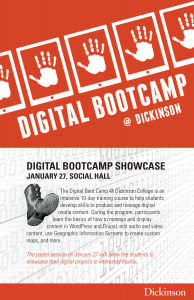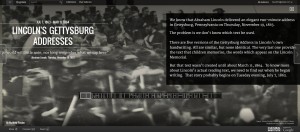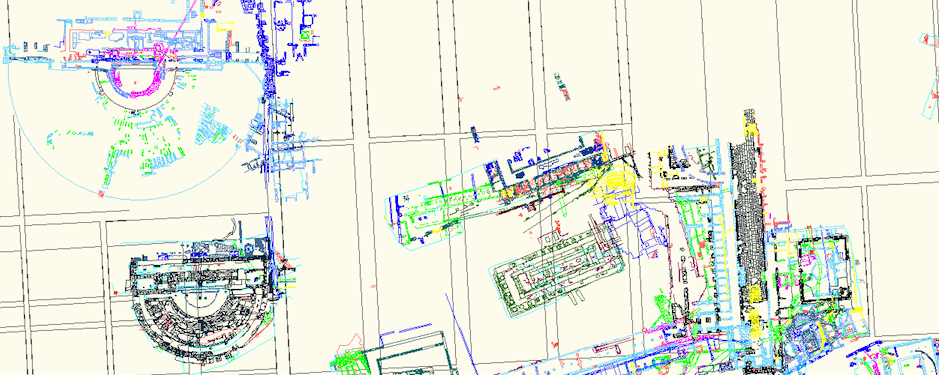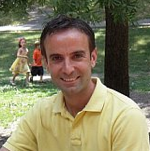Re-blogged from Karl Qualls’ Teaching History
I have been asking students to blog in various ways for a few semesters, but in my new course on interwar Europe, we have finally hit our stride. In previous courses I had used blogs primarily as a “free-write” assignment to stimulate conversation. I would often have students in the first few minutes of class write about the days’ sources, but given that most of my class periods are 50 minutes long, I felt that I was “wasting” time that could be used for other purposes. Thus, blogging was born. Students quickly let me know that blogging in this form felt like busy work and took too much time when blogging MWF.

Simios Bloggeando by Julitofranco via WikiMedia Commons
I altered the blogging by dividing the class into thirds. One-third of the students would blog each day. Similarly, students also were assigned a day to comment on the classmate’s posts. In this way, at a minimum two-thirds of the class each day had some preparation for discussion [but this is Dickinson College, so the actual percentage of students prepared each day is much higher]. After about 2 weeks of reading summary after summary of the readings, I got frustrated with the lack of depth in many of the blog posts. I therefore asked students to briefly summarize (no more than one paragraph of their c. 400 word posts) the day’s material and then choose one section of a text (or film for those days) and analyze it from the point of view of our course themes. This began to improve the depth of class discussions, so I pushed to the next level.
Now the students were asked to write about a single phrase or sentence (or bit of dialogue from a film). Here I was trying to get them to use the “notice and focus” method described by David Rosenwasser and Jill Stephen in their Writing Analytically (Wadsworth, 2012). This method asks students to find a passage that is significant, strange, or revealing. Thus, they have to stay closer to the text and begin to understand it before leaping to conclusions or judgments. For example, when we discussed Ignazio Silone’s novel Bread and Wine, I divided the class into groups, each headed by one of the day’s bloggers. I placed the sentences in question on the screen and then had the bloggers lead a discussion with their small groups. All groups were animated and on task. I asked them to do three things: unpack the meaning of the sentence in question, discuss how it linked to themes in the novel, and then think about what it tells us about Mussolini’s Italy and our course themes. In moving from specific to general, the students seemed much more able and comfortable in understanding and then applying.
As many of us likely do, I gave my students a mid-term course evaluation. It is the first time I have taught this course on Interwar Europe, so I wanted to make sure that the assigned readings, films, lectures, and discussions were all viewed as effective by students. Rather than bore readers with all the results, I want to share some of the students’ thoughts on the question about blogging.
The evaluations were administered in the same manner as a year-end evaluation. I was not in the room and the students completed the evaluations anonymously. In response to the prompt, “Has blogging helped you to focus on key ideas, close reading, and articulating your ideas succinctly? Explain.” I received favorable responses from all but two students, who basically thought the medium was too limited for a full discussion (which was not the intent anyway…I was hoping to prompt further discussion in class).
Some of the students were particularly insightful and positive. I have a few excerpts below:
“When I prepare to write my blog I search for extra information, learn new things, and become able to understand the idea better.”
“I love the dialogue it opens/the fact that it allows for an expression of opinion in a context that still requires some rigor.”
“I like how it makes you critically examine what has been read. You get the gist of it, but also extrapolate on more specific ideas.”
“I make sure to take notes in a way that allows me to group themes from the reading. Blogging, for me, helps put these ideas into words and it has helped my writing skills.”
“I have definitely noticed an improvement in my ability to analyze and articulate readings and ideas ever since we started blogging.”
“I found it especially helpful when remembering the key parts of an article/film/book. It is also a low-key way of practicing supporting an argument.”
“Blogging helps my writing and reading skills…”
“By writing on certain parts of the readings or films as well as reading people’s posts, I gained an idea of how to focus on certain ideas better.”
“…it also helps me to understand how others view the same works, giving me a larger, better, more complete understanding.”
“Blogging has helped me learn how to synthesize what I have read.”
“It has forced me to focus when reading because I know that I will have to articulate my ideas and thoughts.”
“…it requires me to come up with reasoned arguments based on the readings.”
I took these to be very positive responses, and they gave me confidence that the time and effort has been worth it. Students are reporting that, with little intervention on my part, their reading, thinking, and writing skills have been improving. There is still much more for me and them to learn, but this is an experiment that I am certainly happy with at this stage of its development.
I would like to say that all of this was part of my pedagogical plan, but I will admit it… Not all the successes so far have been intentional.
I would love to hear your thoughts and any assignments that have been particularly helpful for students to learn key skills.
–Karl Qualls
 The Digital Boot Camp @ Dickinson College is an intensive 10-day training course to help students develop skills to produce and manage digital media content. During the program, participants learn about the basics of how to manage and display content in WordPress and Drupal, edit audio and video content, use Geographic Information Systems to create custom maps, and more. The poster session on January 27 will allow students to showcase their digital projects to interested faculty. Please stop by next Monday anytime between 12:00-1:30pm in one of the Social Hall sections in the Holland Union Building to see what the participants have digitally created. Food and beverages will be provided.
The Digital Boot Camp @ Dickinson College is an intensive 10-day training course to help students develop skills to produce and manage digital media content. During the program, participants learn about the basics of how to manage and display content in WordPress and Drupal, edit audio and video content, use Geographic Information Systems to create custom maps, and more. The poster session on January 27 will allow students to showcase their digital projects to interested faculty. Please stop by next Monday anytime between 12:00-1:30pm in one of the Social Hall sections in the Holland Union Building to see what the participants have digitally created. Food and beverages will be provided.






 Dr. David Gilman Romano, Karabots Professor of Greek Archaeology at the School of Anthropology, University of Arizona, and Director of the Corinth Computer Project and the Archaeological Mapping Lab
Dr. David Gilman Romano, Karabots Professor of Greek Archaeology at the School of Anthropology, University of Arizona, and Director of the Corinth Computer Project and the Archaeological Mapping Lab Dr. Nicholas Stapp, Director of Geospatial Research at the Archaeological Mapping Lab at the University of Arizona
Dr. Nicholas Stapp, Director of Geospatial Research at the Archaeological Mapping Lab at the University of Arizona